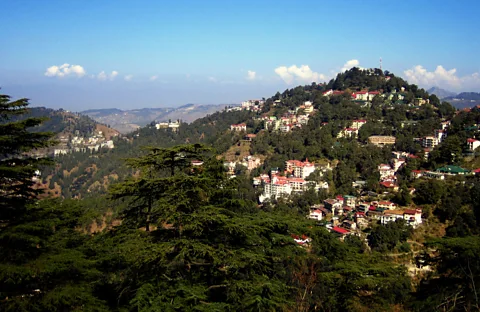Features correspondent

On clear days, the orchard landscapes in the north Indian state of Himachal Pradesh are a photographer’s dream.
Some 80km north of Shimla — the former
summer capital of the British Raj and now the capital of the north Indian state
of Himachal Pradesh — the small rural community of Thanedar is home to the Pahari,
the people of the hills.
The community is also home to the
century-old Harmony Hall orchards, a farm that is central to the region’s history
of fruitful apple harvests. Samuel Evans Stokes, son of a wealthy American
Quaker family and a convert to Hinduism, built the estate in 1912 and –
intentionally and strategically – changed local history by importing the first
Red Delicious apples from the US in 1916.
Better known in India as Satyanand Stokes,
Samuel became part of Mahatma Gandhi’s inner circle. His vision for a
sustainable local economy was a benign colonialism that worked, and apples became
the area’s primary produce. Today, farming families throughout the foothills of
the Himalayas have better health, education and prospects than many other
rural communities in India.
In October 2012, Stokes’s descendants and
local villagers held five days of centenary celebrations, including traditional
free-form, slow and stylised nati
dances performed to a combination of percussion and massive horns played by
local bazo bands.
Heading northeast from Shimla, Highway 22
still follows the old Hindustan-Tibet trade route. It was here that the British
first settled in 1822, attracted to the climate that provided relief from the
heat of the plains and enabled familiar plants to grow. English country garden flowers
– roses, honeysuckle and dahlias – still give gorgeous spring and summer
displays, though the small orchards of Pippin apples planted by the British
have mostly gone. It was only after Stokes’s introduction of the sweeter Red
Delicious, more suited to Indian tastes, that the fruit industry took off.
On clear days, the orchard landscapes
alongside Highway 22 are a travel photographer’s dream. Steep slopes rise and
fall on either side as the narrow road zigzags through progressively
spectacular landscape with the snow-capped Himalayas in the distance. Flat land
is at a premium, and orchards are planted pragmatically, stepping higgledy-piggledy
uphill or weaving a line along thin terraces cut into the hillsides. Birdwatchers
will have a field day too. Huge Himalayan vultures wheel eye-level with the
road, while tiny tits inhabit a range of vegetation, from conifers and cedars
to broadleaved oaks and rhododendrons.
Townships on the apple trail include
Narkanda, Theog and Rampur. Each offers simple fresh food and hot sweet chai (tea), and while there is basic accommodation available, most
travellers visit on day trips from Shimla. The adventurous take local buses,
with all the challenge, chaos and colour they entail, but hiring a taxi for the
day allows for more flexibility in stopping to enjoy the scenery and less
strain on the nerves.
The six-month apple season, from spring
flowering to the last harvest in late September, brings people flooding into
Himachal Pradesh. Paharis from around the region are joined by Nepalese
families from across the border to maintain the orchards and pick the crop.
Trucks and tourists crowd the roads; some are international travellers heading to
trekking destinations in Ladakh, a long day’s drive away, others are holidaying
Indians from around the country. Honeymooners take photos against backdrops of
blossoms, and visitors escaping the summer heat of the plains relish in the
prospect of fresh fruit. Enterprising roadside vendors sell apples juiced,
whole or sliced on a plate; Shimla bakers make delicious fresh apple cake.
Apples are freighted nationwide in all
manner of ways, and watching from a roadside tea stall is a great way to get a
snapshot, literally and figuratively, of how the produce is moved in the
mountains. Cartons of apples are loaded higher than seems possible onto small
tray-back trucks, with squashed boxes of apples on the road testifying that
this is only a relatively secure practice. Passengers on motorbikes embrace
packs of apples as the driver struggles for balance on steep corners.
Sway-backed mules are loaded with boxes and led two abreast along the road. Men
bend doubled over, carrying several crates of apples on their backs, held in
place by a long strap tied against their foreheads. Knobbled hessian bags, sewn
shut, wait to be collected at homestead doors.
Apple wholesale sheds appear intermittently
along the roadside and convoys of interstate trucks wait to go to market. These
trucks are decked out in classic Indian style: half fairground carousel and
half Hindu temple, with vermilion and sunshine yellow as the favoured colours. Painted
instructions on the rear to “horn in passing” are enthusiastically followed by
all and the resultant cacophony adds to the thrill of the road trip.
By October, harvest is over. The roads are
quieter and orchards lay silent again, waiting for the first blanket of snow
and the long hibernation of Himalayan winter.